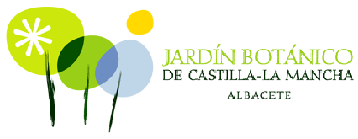Ethnopharmacological relevance
The Sephardic or Judeo-Spanish communities kept a cultural heritage extremely relevant which is recognizable through the peculiar form of their language and practices. Medicine was one of the main professional activities among Jews of Spain before their expulsion in 1492. We expected to find ingredients and recipes in the Sephardic traditional medicine related to classical medicine and to modern ethnopharmacology of Spain, but also influenced by the host countries. Recipes for specific diseases could be compared with modern ethnopharmacology. Although the basic language of the recipes is Judeo-Spanish, it presents local variants and names which are not only dialectal Spanish, but also Turkish, Hebrew or Bosnian.
Methods
The main source of information for Sephardic folk medicine are the specimens of the “Livro de Milizinas” printed in Thessaloniki and Smyrna (Izmir) during the 19th century. Others are some documents on pharmacy conserved in Bosnia associated to the Papo family of Sephardic Aktars or Attars (Ottoman herbalists) and the oral tradition in the Sephardic communities of Asia, Europe and the Americas. In order to analyze these formularies, we have studied the recipes in eleven different sources systematized in an Excel® 2010 book. We focused on formulas that are not merely rituals instead contain specific ingredients and pathologies. Specific dictionaries were generated in Excel® 2010, to standardize names of ingredients and pathologies.
Results
In the 502 complete recipes and variants studied, 107 pathologies and 154 different ingredients appear. Among ingredients, 93 are plants, 38 animals and 23 mineral substances. The most common pathologies in the recipes correspond to infectious diseases, headache, epistaxis, parasites and the “espanto“. These ingredients received 397 different vernacular names, being prevalent those in Spanish (303) followed by those in Turkish. Preparations recorded are simple, easily made at home, not requiring special tools or hardware. In studies dated 1845 in Bulgaria the forms of preparation and administration are similar. Topic preparations externally applied are prevalent in numbers doubling the oral administration on the contrary of modern ethnopharmacology studies in Thessaloniki where dominate internal uses over external ones. The books of medicines of Smyrna and Thessaloniki are very similar, if not almost identical. The “Livro de Milizinas” constitute a peculiar Sephardic text within the Ottoman style of medicine. The proximity in the analyses with Ottoman sources (Ottoman pharmacopoeias, Turkish Aktar shops and Medieval Cairo Jewish pharmacopoeia) is due to the high proportion of ingredients in common. After excluding animal and mineral ingredients of the analyses, modern ethnobotanical records from Greece and Turkey appear closer to the Sephardic main sources. The rest of Sephardic sources with notably smaller lists of ingredients represent fragments of mostly oral transmitted tradition and treat pathologies such as evil eye or “espanto“. The recipes of the Sephardic of Bosnia comprise pathologies such as plague, cholera, typhus or gastroenteritis. Ingredients, largely of plant origin, to 93, are still in use in phytotherapy and/or local medical-pharmaceutical ethnobotany in Turkey or Greece.
Conclusions
The Sephardic materia medica presented in the “Livro de Milizinas” is eclectic, adapted to an urban environment and to the prevalent pathologies of the second half of the 19th century, within the main cultural framework of the Ottoman Empire but with peculiarities characteristic of Sephardic Culture. These can be traced back to the period immediately after the expulsion of Sephardic from Spain. Their relationships with other modern sources are scarce, even in terms of pathologies.


Leave a Reply